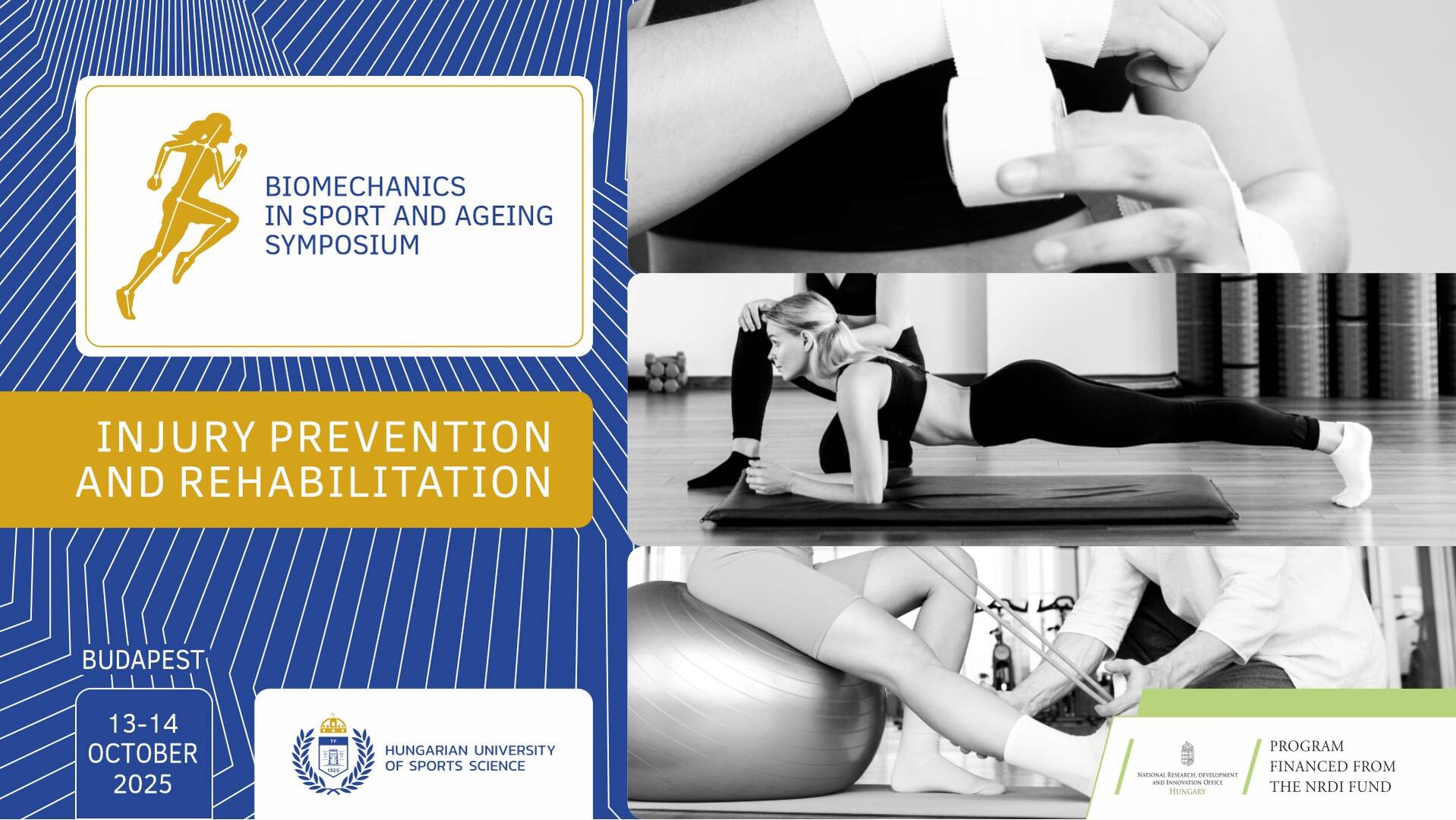tf.hu/bsa |
Programme | Abstract booklet | Registration | Speakers | Poster submission | Continuing education credits | Conference venue | Budapest | Accommodation | Social programs | Committees | Contact
Welcome to the 3rd Biomechanics in Sport and Ageing Symposium: Injury Prevention and Rehabilitation, organised by the Hungarian University of Sports Science and the Department of Kinesiology, Budapest, Hungary, 13-14 October 2025!
The aim of the symposium is to provide a scientific platform for a state-of-the-art update on the progress in Injury Prevention and Rehabilitation with respect to sport biomechanics and ageing.
Sport and ageing might appear unrelated. Yet we consider sport and ageing as complementary: assessment and training methods developed in sport science are transformed into diagnosis and treatment of ageing-related impairments.
The symposium starts with two keynote presentations, which will be free of charge and open to the public. First, professor Anthony Blazevich (Edith Cowan University, Australia) will focus on muscle function and injury prevention in sport. Associate professor Jason Franz (UNC Chapel Hill & NC State University, USA) will provide an overview of how age affects the biomechanics of tendons in the lower extremities.
Then, registrants for the symposium will have the opportunity to attend two sessions of invited presentations on the biomechanics of the ageing musculoskeletal system and two sessions of invited presentations on injury prevention and rehabilitation on muscle and tendon injuries.
Session 1 will address the disease of the 21st century, muscle wasting or sarcopenia. Recent epidemiological studies and meta-reviews suggest that low skeletal muscle quantity and quality are associated with and can, if not corrected, exacerbate clinical conditions. Prevention of skeletal muscle loss and rehabilitation of dysfunctional muscles are thus at the pinnacle of experimental research. This is especially true with respect to ageing, as the senior segments of society have been growing in every country around the world. Because Parkinson’s disease often evolves in conjunction with ageing, it is relevant to minimize muscle loss in this debilitating condition.
Session 2 will also feature an international array of distinguished researchers addressing the exciting hypothesis that long-term sport participation protects against the age-related decline in musculoskeletal health. While this expectation is attractive, the data extracted from master athletes can be contradicting. Therefore, it is timely to provide an update on the role of lifelong physical activity plays in joint, bone, and muscle-tendon function.
Session 3 will kick off the second day of the symposium with a focus on new developments in understanding hamstring muscle structure and function. Experts will discuss how novel data from the level of motor units and sarcomeres to whole-body kinematics can be integrated into the practice of hamstring strain injury prevention.
Session 4 will provide a state-of-the-art overview of recent developments in Achilles tendon injuries. Presentations will provide a fresh perspective on how injuries modify the structure and function of the Achilles tendon. The session concludes with new insights into how to select exercise for the rehabilitation of Achilles tendinopathy.
The 3rd Symposium will end on a practical note: the local biomechanics group organise multiple workshops.
The workshops will demonstrate new methods that allow coaches and sport scientists to view and receive feedback on movement kinematics in real time. Additional workshops will feature technology used to examine architecture and function of muscles and tendons.
Special thank you goes to our sponsors! Without their support, the 3rd Biomechanics in Sport and Ageing Symposium would not be possible.
Welcome to Budapest! Network, learn, and enjoy the symposium!
Sincerely yours,
Prof. dr. Zsolt Radák, PhD, Vice-Rector for Research and Innovation and Patron of the symposium
Dr. András Hegyi, PhD, Prof. dr. h. c. Tibor Hortobágyi, PhD, co-chairs of the scientific committee
Mr. Dániel Mezei, Ms. Eszter Kerekes, Ms. Kata Kádár, Dr. Annamária Péter, PhD co-chairs of the organising committee






